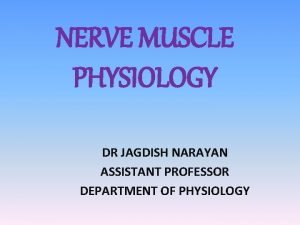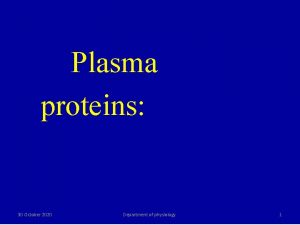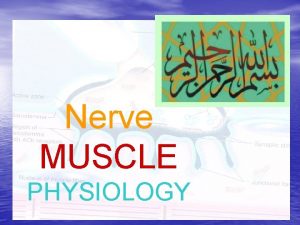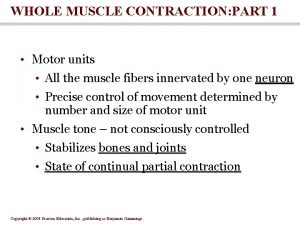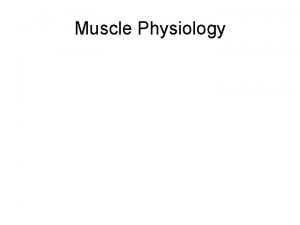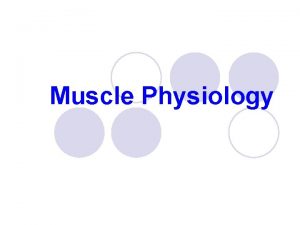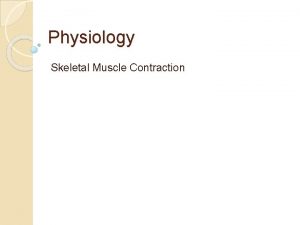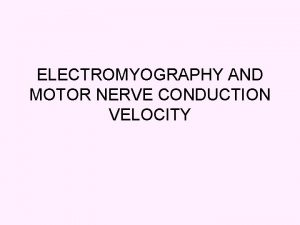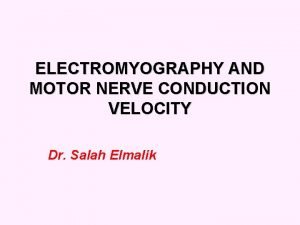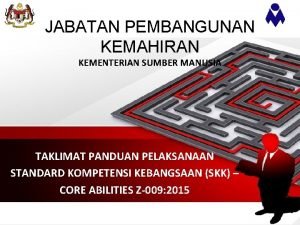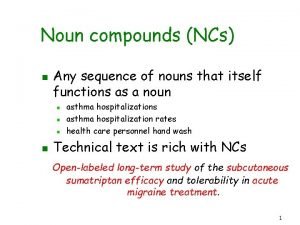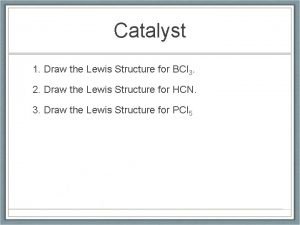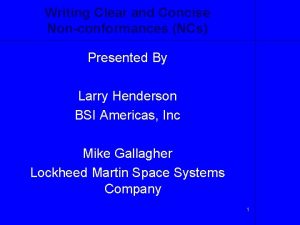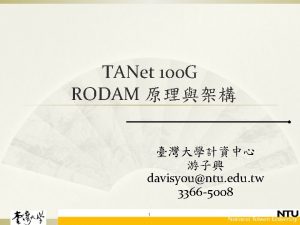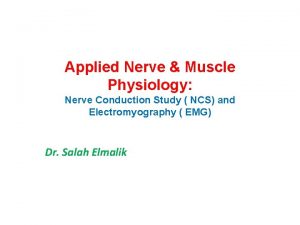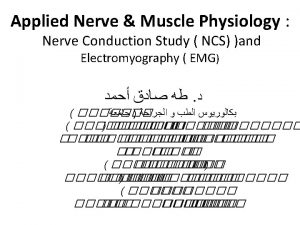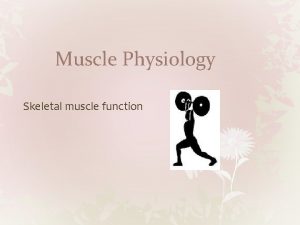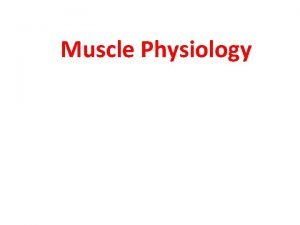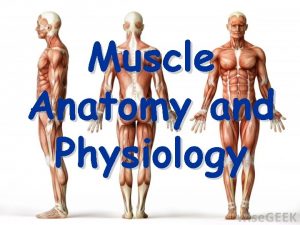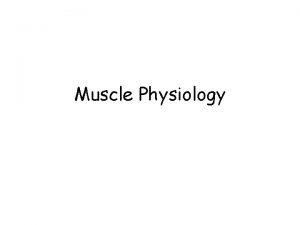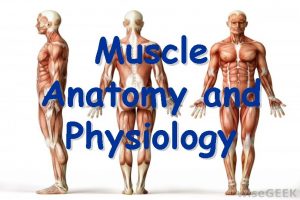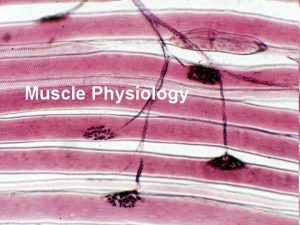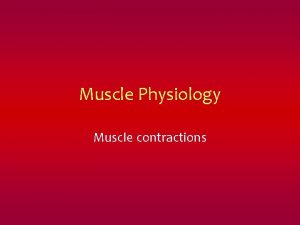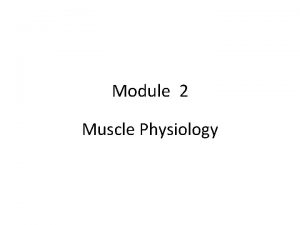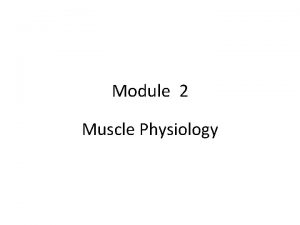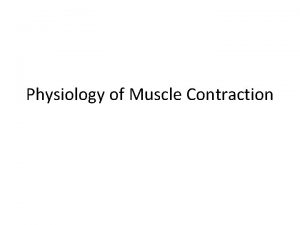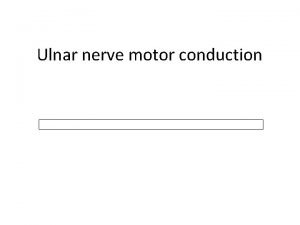Applied Nerve Muscle Physiology Nerve Conduction Study NCS



















- Slides: 19

Applied Nerve & Muscle Physiology : Nerve Conduction Study ( NCS) )and Electromyography ( EMG)

Objectives • Define what is nerve conduction study (NCS) and electromyography ( emg). • Explain the procedure of NCS using Abductor Pollicicis Brevis muscle. • Define the normal conduction velocity in upper limb and lower limb nerves. • Define the motor unit potentials ( MUPs) and how they are changed in muscle and nerve diseases.

Nerve Conduction Study ( NCS) • A nerve conduction study (NCS) is an electrophysiology test commonly used to evaluate the function of peripheral nerves of the human body. • It could be motor nerve conduction study ( motor NCS) , sensory nerve conduction study or mixed nerve conduction study. • In this lecture, because of time constraint, only motor nerve conduction study will be discussed • In the motor test the recorded response is the muscle CMAP ( compound muscle action potential ) 3


Procedure • An electrical stimulus is applied over a nerve ( e. g. , median nerve ) and a recording electrode is place over the muscle suppllied by that motor nerve. • The stimulus is applied at two sites : a distal site ( wrist ) and a proximal one ( antecubital fossa , elbow). • The muscle usually chosen in this routine test is the Abductor Pollicis Brevis • The active recording electrode (G 1) is place over thenar eminence which overlies the muscle. • And the reference recording electrode (G 2) about 3 cm away. • The oscilloscope ( CRO) sweep speed is adjusted to 2 ms / cm. 5

• The stimulus duration used is 0. 2 ms and stimulus frequency to 1 / sec. • Apply the stimulus and record the response from stimulation at the wrist. • Store the CMAP ( compound muscle action potential ) in the first channel of the oscilloscope. • Change the stimulating site from wrist to antecubital fossa ( elbow ). • Stimulate the nerve & record the CMAP for median nerve stimulation at the elbow.

Distance d = 284 mm L 1 Latency At wrist = 3. 5 ms L 2 Latency At elbow = 8. 5 ms 7

Nerve conduction velocity D 2 D 1 Latency (s) L 2 L 1 NCV = D 1 -D 2 L 1 -L 2

L 1 L 2

• Measure the distance from elbow to wrist with a measuring tape. • Measure the latency in first CMAP & in the next CAMP. • Enter the distance between the elbow and wrist. 10

MNCV • MNCV will appear. • It can also be calculated by formula • MNCV (m/sec)= Distance (mm) -------------L 2 -L 1 (ms) • L 1 = latency at wrist • L 2 = latency at elbow 11

Normal values for conduction velocity ü In arm – 50 – 70 m / sec. ü In leg – 40 – 60 m / sec. 12

Electromyography ( EMG)

• Electromyography (EMG) is a technique for evaluating and recording physiologic properties of muscles at rest and while contracting. • It’s a recording of electrical activity of the muscle by inserting needle electrode in the belly of the muscles ( needle emg ) or by applying the surface electrodes ( surface emg ) • The potentials recorded in needle emg are derived from motor units of the muscle, hence known as motor unit potentials (MUPs). • Q: Define what is a “ motor unit ”? 14

• A motor unit is defined as one motor neuron and all of the muscle fibers it innervates. 15

Normal MUPs • Amplitude : 300 μV ( microvolt) – 5 m. V ( millivolts) • Duration : 3 – 15 ms(milliseconds ) 16

MUPs (2) During Mild Effort During Moderate Effort note recruitment of additional motoneurons During Full Voluntary Effort. There is full recruitment ( you can not see the baseline )

Examples of Abnormalities of MUPs • In nerve diseases : Giant MUPs due to reinnervation > 5 m. V • In muscle disease : Small MUPs < 300μV

Thanks
 Nerve muscle physiology
Nerve muscle physiology Applied physiology
Applied physiology Excitation contraction coupling
Excitation contraction coupling Terminal cisternae
Terminal cisternae Muscle physiology
Muscle physiology Treppe
Treppe Physiology of muscle contraction
Physiology of muscle contraction How to calculate nerve conduction velocity
How to calculate nerve conduction velocity Emg neurogenic vs myopathic
Emg neurogenic vs myopathic Ascoulor
Ascoulor Ncs core abilities
Ncs core abilities Hoctructuyen.com.vn
Hoctructuyen.com.vn Egenkontrast
Egenkontrast Ncs slogan
Ncs slogan Noun sequence
Noun sequence Ncs curriculum
Ncs curriculum Bcl lewis structure
Bcl lewis structure Ncs
Ncs Cisco ncs
Cisco ncs Smooth muscle cells
Smooth muscle cells
